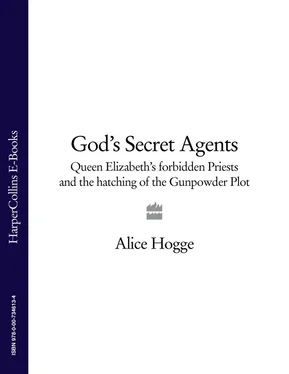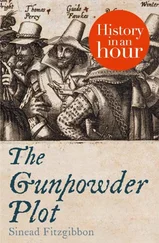The castle was in a ruinous state by the time of Owen’s birth: the seat of Oxford’s civic power had long ago shifted to the city’s Council Chambers. But beyond the parish of St Peter-le-Bailey, to its west, lay evidence of a more recent power-shift still. Here were the remains of Oseney Abbey, lately Oxford’s cathedral. All that was left of it were the church walls, the dovecote and the outbuildings; the rest of the stone had been stripped from the site and carried over to the construction works at Christ Church College. Further to the south a similar process was at work as the Franciscan and Dominican friaries were dismantled piece by piece by city speculators and sold off to make new townhouses. 4
The landscape of England was being re-drawn. The castles and manor houses of the old feudal aristocracy had shared their domination of the English countryside with the spires and steeples of the abbeys, priories and monasteries. They had stamped their authority on the public consciousness by the sheer scale of their physical presence. But both aristocrats and abbots had found themselves systematically stripped of that authority in Tudor England. And all those who had bowed to the seigniority of Nobility and Church, who had prospered under it or were sheltered by it, were left shivering in the brisk winds of change.
This was the birth of modern England, with a newly re-worked relationship between Parliament and monarch, and an increasing dependence on the unstoppable middle classes. Of course for some it had been an entirely unwanted pregnancy, but for many, many more across the nation, some with, some without a vested interest in the old order, but all of them sharing a strong desire for stability and the certainty of tradition, it would prove a difficult birth: bloody and unutterably painful. And nowhere was this truer than at Oxford.
On 3 February 1530, just over thirty years before Nicholas Owen was born, William Warham, Archbishop of Canterbury, peremptorily thrust Oxford University into the centre of the controversy of the hour. He wrote to the Vice-Chancellor asking him and Oxford’s academics to provide a unanimous opinion on the validity of the marriage of Henry VIII to Catherine of Aragon. 5
The request was as untactful as it was unwelcome: Cardinal Wolsey, the university’s wealthiest patron, had been arrested only the year before for failing to provide Henry with the verdict he was looking for. And now it must have seemed to those at Oxford, asked to enter after Wolsey into this most explosive of minefields, that the Cardinal’s downfall would soon be followed by their own. So Oxford dragged its heels. When Cambridge, to the same request, came quickly back with the answer Henry wanted, the relief in the fens might have been palpable but the spotlight now shone ever more brightly on the midlands. And still Oxford dragged its heels. 6
In early April the King could wait no longer. His agents, led by the Bishop of Lincoln, descended on the university, hotly pursued by a strongly worded letter from Henry himself. While the bishop worked on Convocation, persuading them to hand the matter over to the university’s theologians, Henry reminded the ‘youth’ of Oxford precisely where their loyalties lay. This two-pronged attack produced the desired result. Though the Faculty of Arts grumbled that the Faculty of Theology had no right to speak for the university as a whole, the combination of manipulation and not so veiled threat had won the day. On 8 April Oxford University gave Henry the answer he was looking for: his marriage was invalid. But its tardiness in doing so was neither forgiven nor forgotten. * 7
In September 1535 Henry’s agents were back in Oxford as part of a whirlwind tour of the country in preparation for the dissolution of the monasteries and by now the bloodshed had begun. In July of that year one of Oxford’s most illustrious former scholars, Sir Thomas More, was executed on Tower Hill, a victim of the new Treason Act: a piece of legislation that efficiently turned loyalty to the Pope in Rome into treachery to the English State. More’s scruples did not trouble Henry’s agents, though: Dr Richard Layton, ‘a cleric of salacious tastes’, and his assistant, John Tregwell, brought with them to Oxford an estate agent’s eye for a property and a prospector’s nose for gold, neatly masked behind an official mandate to root out opposition to the King’s new church. Their report, when it came, hit the university a sickening blow. 8
The first wave of the dissolution saw all of Oxford’s religious houses shut down: the Benedictine-run Canterbury, Durham and Gloucester Colleges, and the Cistercian-run St Bernard’s College. Their assets were stripped, their real estate sold off to the highest bidder and their inhabitants turned out onto the streets. Scores of academics and undergraduates now found themselves jobless, homeless and penniless. Hard hit too were the university libraries. College after college was ransacked for its illuminated books (seen as symbols of a despised papist idolatry), which were then carried out in cartloads and destroyed. In New College quadrangle the pages of the scattered medieval manuscripts blew thick as the autumn leaves, reported Layton. One enterprising student, a Master Greenefeld from Buckinghamshire, gathered them up and used them to make ‘Sewells or Blanshers [game-scarers] to keep the Deer within the wood, and thereby to have better cry with his hounds.’ 9
Oxford reeled under this attack. The developing university had drawn the wealth of the monasteries to the city. Those same monasteries had spawned the abbeys and priories, and they, in turn, had financed the building of Oxford’s first academic halls. And so the university and the city had grown. Even the newer, secular colleges, which escaped the cull but were bludgeoned into a show of loyalty, were dependent on the Church revenue now being siphoned into the Crown’s coffers. The destruction of the monasteries brought academic chaos to Oxford. More pertinently, it also brought festering resentment. 10
Some fourteen years later, in 1549, royal agents called on Oxford again. This time they were Edward VI’s visitors, come to enforce his new Prayer Book, the first real doctrinal step towards Protestantism. *Hot on their heels came the German and Swiss mercenary forces of Lord Grey of Wilton. Let Oxford be in no doubt that this regime meant business. Of the thirteen heads of those Oxford colleges still remaining, the visitors could find only two who supported the Government’s religious policy; as the Protestant reformer, Peter Martyr, remarked: ‘the Oxford men…are still pertinaciously sticking in the mud of popery’. But events soon proved that Oxford men were not the only stick-in-the-muds. July of that year burnt with the heat of a countrywide rebellion. On 12 July the Duke of Somerset wrote to Lord Russell, to lament the ‘stir here in Bucks. and Oxfordshire by instigation of sundry priests (keep it to yourself)’. Lord Russell scarcely had time to broadcast the news; just six days later Grey’s mercenaries had quickly and ruthlessly put out the fires. The eleven-year-old King Edward noted gleefully in his journal that Lord Grey ‘did so abash the rebels, that more than half of them ran their ways, and other [ sic ] that tarried were some slain, some taken and some hanged’. Grey left careful instruction that ‘after execution done the heads of every of them…to be set up in the highest place for the more terror of the said evil people’. The vicars of Chipping Norton and of Bloxham were hanged from the steeples of their own churches, and Johann Ulmer, a Swiss medical student at Christ Church College, wrote home to his patron, the Zurich reformer Heinrich Bullinger, that ‘the Oxfordshire papists are at last reduced to order, many of them having been apprehended, and some gibbeted, and their heads fastened to the walls’. 11
Читать дальше












